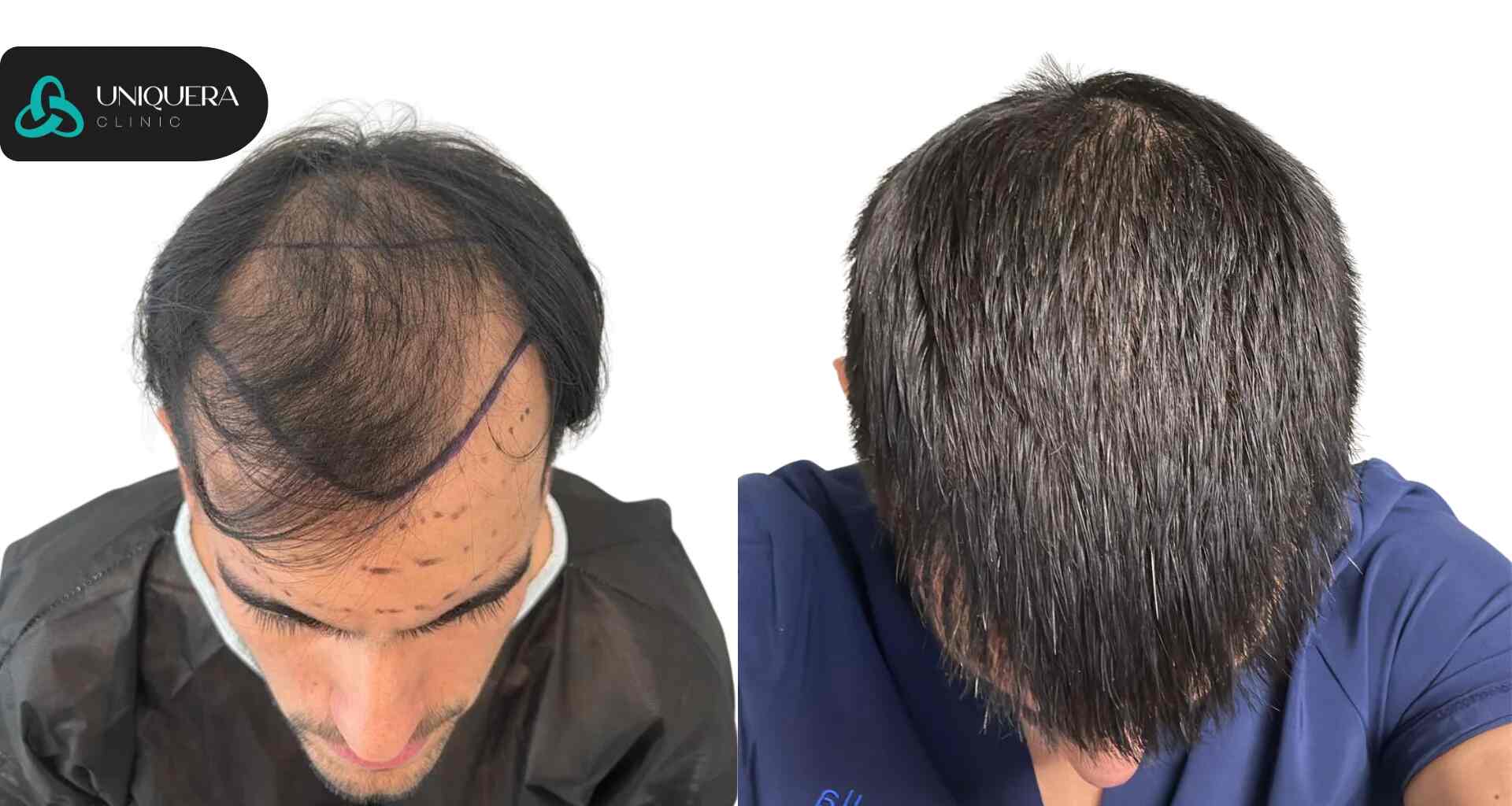DEBUG: What Results Can You Expect from a Successful Hair Transplant Surgery?
What Results Can You Expect from a Successful Hair Transplant Surgery?
- Home
- What Results Can You Expect from a Successful Hair Transplant Surgery?

A hair transplant surgery is one of the most effective long-term solutions for hair loss. By using your own healthy follicles from the donor area, experts can restore density and create natural-looking coverage. However, results are not immediate. Patients often wonder what to expect in the days, weeks, and months following surgery.
At UniquEra Clinic, we believe informed patients achieve the best results. Understanding the healing process, hair transplant recovery timeline, and realistic outcomes helps set expectations and ensures confidence throughout the journey. This guide explores the complete timeline of recovery, how growth stages unfold, and when you can expect to enjoy your final results.
Before undergoing hair transplant surgery, a detailed hair transplant consultation is essential. At this stage, your expert evaluates:
By tailoring the procedure to your unique needs, clinics like UniquEra Clinic ensure both aesthetic satisfaction and sustainable results.
Recovery begins the moment surgery ends. During this period, your scalp may show scabs, redness, and mild swelling. Patients are advised to:
This phase is crucial in healing transplanted grafts. By day 10–14, most scabs fall away, and the scalp begins to appear more normal.
It can be surprising when transplanted hairs begin to shed around the second or third week. This normal stage (often called “shock loss”) means follicles are intact beneath the skin and resetting for a new growth cycle.
From the first to third month, new hair begins to sprout, although it often looks thin and uneven at first. The texture may be fine and soft. This period requires patience, as visible coverage has not yet developed. Good nutrition, scalp care, and following clinical advice support early growth.
Between three and six months, hair density starts to improve. Patients often notice new coverage in previously thinning or bald areas. Hair transplant before and after comparisons begin to show encouraging change. Growth is still maturing, but the psychological boost is real.
During this stage, most transplanted hair becomes visible. Strands grow thicker and stronger, matching natural hair in texture. For many, this is when the full benefits of FUE hair transplant and Sapphire FUE hair transplant start to shine.
The complete transformation typically occurs within 12–18 months. By this time, transplanted follicles have matured fully, producing consistent growth. The hair blends seamlessly with the surrounding areas, and the results are permanent, provided ongoing hair loss is managed appropriately.
At UniquEra Clinic, each procedure is carefully planned to optimise these factors, ensuring natural, lasting results.
These steps support smoother healing after a hair transplant and maximise long-term outcomes.
Patients often arrive with significant thinning or bald patches. In before-and-after results, the contrast is striking: areas that were once sparse gain natural coverage, creating a youthful and balanced hairline or crown. Reviewing transformations helps set realistic expectations and reassures future patients of achievable outcomes.
A successful hair restoration surgery often changes more than just looks. Patients frequently report:
At its best, a hair transplant is not only about hair – it’s about regaining identity and self-assurance.
Not every clinic delivers the same standard of results. Choosing a team with proven expertise, ethical communication, and structured aftercare is essential for predictable outcomes.
At UniquEra Clinic in Istanbul, we combine medical expertise with artistry. From the initial hair transplant consultation to the final follow-up, patients receive personalised, patient-first care.
Whether you want to restore a receding hairline or add volume to the crown, our team delivers world-class, natural-looking results.
A successful hair transplant is not an overnight fix. It’s a carefully structured journey in which recovery, healing, and growth unfold in distinct stages. From early shedding to final density at 12–18 months, patience – and the right clinical partner – make all the difference.
With expert planning, advanced techniques, and dedicated aftercare, patients enjoy natural, permanent results. At UniquEra Clinic, every transplant is designed with precision, ensuring confidence that lasts a lifetime.
Q1. How soon will I see results after a hair transplant?
Early growth typically appears at 3–4 months, with full results between 12–18 months.
Q2. Are hair transplant results permanent?
Yes. Transplanted follicles come from DHT-resistant donor areas and continue to grow for life. (Surrounding non-transplanted hair may still thin with age.)
Q3. Will my hairline look natural?
With careful planning and advanced techniques like Sapphire FUE and DHI, the hairline is designed to match your facial features and grow naturally.
Q4. Does hair transplant surgery leave scars?
Modern FUE hair transplant methods leave only tiny, negligible marks that are invisible once hair grows in.
Q5. Will I need more than one procedure?
It depends on your degree of hair loss and goals. Some patients achieve full coverage in one session; others return later for added density.
Q6. How important is aftercare?
Critical. Following post-op instructions (washing, sun protection, check-ins) supports graft survival and overall outcome.